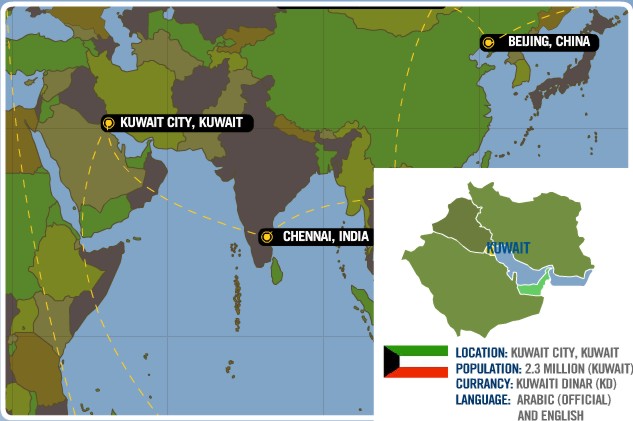|
|
 |
|
|
 |
 |
|
|
 |
 |
 |
|
Kuwait City is the capital of the emirate of Kuwait, and plays host to Kuwait's parliament, the Majlis Al-Umma. Kuwait itself is a country of exciting mysteries and colorful contradictions. Striking modern architecture, such as the Liberation Tower and the KuwaitTowers, easily coexist with the timeless historical ambiance of the desert surrounds. Modern Kuwait has emerged from a nation of spice merchants and pearl divers to one of the world's largest oil exporters. Having undergone many exciting transformations, the country is a truly cosmopolitan society where different cultures have fused into fascinating mix, and the past and the future exist peacefully side by side.
Kuwait stretches from the warm waters of the Persian Gulf across desolate oceans of desert to Saudi Arabia in the south and Iraq to the west. Traditional Arabian markets coexist with opulent shopping malls, Kuwait is a dynamic and diverse country and with so much to offer and more left to discover, Kuwait City is a destination worth visiting. Located at the head of the Persian Gulf, Kuwait City was founded in the eighteenth century. Early on, the ancient city was surrounded by a simple mud wall and relied on trade traffic from sea vessels and land-caravans. But with the development of the country's oil industry after World War II, and the influx of wealth it brought to the country, Kuwait City was transformed into a modern metropolis. Out went the mud wall, and in came thousands of new city dwellers as even today, almost all of Kuwait's population is concentrated near the capital. Kuwait City was damaged during the Iraqi occupation and the Persian Gulf War during 1990-91, however, virtually all traces of the invasion have now been cleared. Construction cranes create a jagged skyline as skyscrapers reach skywards, modernizing the city and transforming it into a world-class, state-of-the-art business hub.
|
|
|
Built in 1979, the Kuwait Towers are the most famous landmark in the city. The Towers have become the proud symbols of Kuwait, and therefore were targeted by Iraqi dictator Saddam Hussein during the Iraqi invasion. Fortunately, only minor damage was sustained by the Towers, and today they remain a mark of Kuwait's independence
Most visitors to the city are looking for a relaxing beach getaway, as the Persian Gulf beckons with its glistening waters and long stretches of sandy beach. Tourists can take advantage of the many Western cinemas and fast-food chain restaurants within the city. For those seeking a more authentic experience, there are plenty of old markets to browse and local artisans to watch. The markets offer an opportunity to view Kuwaiti textiles, Bukhour burners, artists making Bishts, and even dhow making. Here you will see Arab men wearing the traditional dishdashas and a large number of women who still wear abayas and the hajab (scarf worn to cover hair), but common Western wear also abounds. Lovers of architecture will appreciate the ornate doors of the old buildings and the various Mosques within the region, especially the rebuilt and modernized Fatma Mosque. The mosque had been reduced to a skeleton after the Iraqis plundered the city but was reconstructed by the government in 1992. The biggest mosque in Kuwait City, called Al-Masjed Al-Kabir, was also very badly damaged, but is now renovated and open for worship.
|
 |
|
|
 |
 |
 |
|




